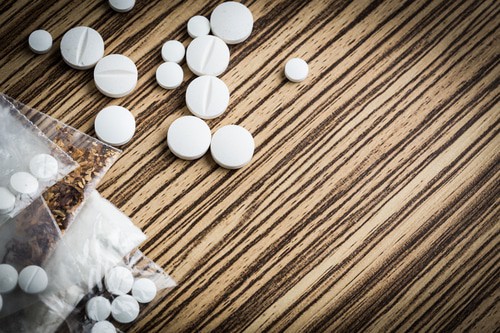Suboxone is a prescription medication used to help treat people that are addicted to opiates and having a hard time getting off of them. When it is taken under a doctor’s supervision and as prescribed, it can be successful in weaning a person off of prescription opioids and illegal drugs like heroin. However, many people end up abusing it, and suboxone withdrawal symptoms can occur, making it just as difficult to get off of suboxone as it is to get off of any opiate.
What is Suboxone?
Suboxone is meant to treat opioid dependence. It should be prescribed by a doctor, and while taking it you should be in treatment, closely monitored by a therapist and a doctor. This will ensure that it is as effective as possible, especially in the beginning. Suboxone is made up of two main ingredients, Buprenorphine and Naloxone. Buprenorphine attaches itself to the same receptors as opioids, which eases withdrawal symptoms and also helps with cravings – preventing relapse. Naloxone is meant to prevent the abuse of suboxone, but it doesn’t always work because people can take it for longer than needed or in higher doses without going into withdrawal caused by the Naloxone.
Suboxone is proven to be an effective treatment for opioid dependence. It can be easily prescribed in a doctor’s office, but it is most recommended to take suboxone as part of a bigger treatment plan. Suboxone makes successful opioid recovery more feasible because so many people avoid getting treatment, setting themselves up for failure. It is actually estimated that only about 10 percent of people who suffer from opioid dependence actually get treated for it. Treatment with suboxone can set you up for success, but it is important to be careful with suboxone.
Suboxone Withdrawal Symptoms and How to Prevent Them
There is an argument that exists that suboxone is just replacing one addiction with another. However, this is only the case if you abuse it. If you do, you’ll experience suboxone withdrawal symptoms when you try to get off of it. While Suboxone is effective for helping get people off of opioids, when it is taken for a long time, it will cause detoxification when you quit.
Suboxone withdrawal symptoms include:
- Stomach Upset
- Muscular Aches
- Insomnia
- Anxiety and Mania
- Depression
- Shaking and Cold Sweats
Symptoms are very similar to opioid withdrawal and can vary in severity depending on your own unique situation and how much you were taking. Unfortunately, many people who experience these withdrawal symptoms turn to opioids or other drugs to cope, going right back to their original addiction.
Symptoms of withdrawal are usually the worst in the first few days after you cease taking suboxone. After a week, symptoms become less severe. Things like general body aches, anxiety, and insomnia may linger for a while. Depression is a strong symptom of suboxone withdrawal, which usually gets the strongest after a month. This is a dangerous time where you need to be on guard so that you don’t relapse.
Suboxone is a great tool to help you overcome opioid dependence, but it is important that it is part of a larger treatment plan so that you get the best possible outcome. By using it on your own, you are putting yourself in danger of experiencing suboxone withdrawal symptoms which can make you relapse. It is best to go through treatment once and do it correctly instead of having a number of failed attempts, which does nothing but discourage you. So, talk to a treatment center about starting suboxone therapy for your opioid dependence and drug withdrawal as soon as possible to get you on the right track to a sober life.






